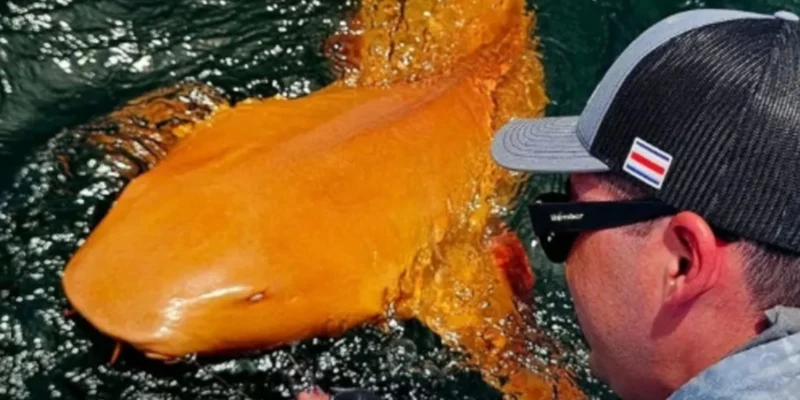Off the coast of Costa Rica, a shark has been caught that is attracting attention with its unusually bright orange color. The nurse shark, more than two meters long, was discovered during a sport fishing trip near Tortuguero National Park at a depth of 37 meters. Its striking appearance is due to an extremely rare pigmentation disorder.
Cause: Xanthism and albinism
The researchers assume that the color change was caused by xanthism – also known as xanthochroism. In this condition, the animal lacks red pigment, resulting in excessive yellow or golden tones. In this case, it led to the intense orange skin. Such cases have never before been documented in cartilaginous fish such as sharks, rays, or chimaeras in the Caribbean.
The nurse shark also showed traits of albinism: its white eyes were particularly striking. Normally, nurse sharks have a brown coloration that helps them blend in with the sandy seabed. However, the unusual coloration could make the shark more visible to predators and therefore more vulnerable.
"Further research is needed to determine whether genetic or environmental factors favor this rare pigmentation disorder in sharks," the scientists explained.
Rare anomaly with scientific significance
Xanthism is extremely rare in the animal kingdom. So far, only isolated cases have been known in fish, reptiles, and birds. The fact that it has now been documented in a nurse shark in the Caribbean raises new questions about the genetic diversity of this shark species. While some scientists assume that animals with this anomaly have lower chances of survival, this finding may contradict that theory.
The cause is usually a genetic mutation, but environmental factors such as diet can also influence pigmentation. The discovery has therefore sparked great interest in marine research and could, in the long term, provide new insights into the adaptability of cartilaginous fish.





